DIY air humidity meter: instructions for assembling a hygrometer
To control the microclimate of the room you will definitely need special devices.This also applies to a device with which you can monitor the amount of water vapor that may be present in the air.
Agree, not only excessive dryness, but also excess humidity negatively affects the health of people living or working here. So why not try making your own air humidity meter that will help for different situations?
Next, we will talk about the principle of operation of the hygrometer, and also provide instructions for self-assembly of several simple devices.
The content of the article:
What is a hygrometer used for?
First, you need to understand the question of why you might need an air humidity meter at all? Offered for sale ready-made devices for this purpose. We are talking about hygrometers, although there are also people who prefer psychrometers.
But everyone is accustomed to simpler and more understandable devices. The first option can be called the most practical and convenient, since here you do not have to do calculations to get an accurate figure for air humidity.

But air humidity indicators play an important role. If we are talking about the human body, for it this figure should be in the range of 40-60%.But this is only if we are talking about a healthy person.
When the indicator differs or is lower, you will need to use a special humidifier. You will have to spend money on it. Otherwise, you need to turn on the dehumidifier, which will also require extra financial costs. And it will be very good when the moisture level in the room is automatically regulated.
An air humidity meter may be needed for a variety of situations.
Do not lose sight of the fact that excess moisture or its insufficient amount necessarily causes harm:
- to the human body;
- indoor plants;
- pieces of furniture;
- food products.
It is also important not to forget about household appliances, which are present in almost any city apartment or private home.
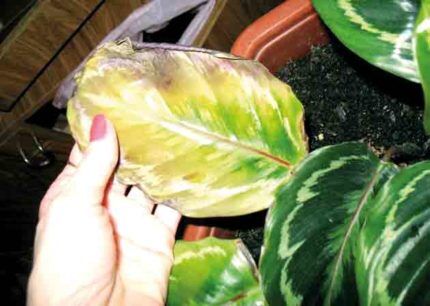
First of all, this applies to people who have problems with their health. Your well-being depends on the level of humidity in the room. If the air humidity is below the permissible norm, even a healthy person will have difficulty breathing.
Drying of the mucous membranes is definitely observed. This is especially important for those who have a disease associated with the respiratory tract: asthmatics, bronchitis sufferers, etc. Don’t forget about heart disease, where air humidity also plays a serious role.
Read more about the effect of air humidity on human health. Further.
The need to measure humidity
A humidity meter may be needed both for a family living in a small city apartment and for a farm.This is especially true for those who have incubators and breed chicks.
In order not to buy this device, you can try to make it yourself. There is nothing complicated about this; even someone who has never done this can easily do it. But you will still need several elements or ready-made devices. It all depends on which meter option is chosen.

Next, we will look at several homemade options for an air humidity meter, and each has its own advantages and disadvantages.
Some devices are very easy to make, but others will require a little tinkering. As a result, you will be able to find out the exact or approximate percentage of humidity. It all depends on the choice of device.
In order to independently assemble more complex instruments for measuring humidity, you may need a soldering iron, as well as other tools.
Assembling homemade devices
Not all of the devices described are worthy of attention, so it’s worth focusing on those that are easier to manufacture or give more accurate readings.
Option 1 - the simplest hygrometer
Many people who use glasses have long noticed that if they go into a warm room from the cold, the glasses usually fog up. But everything depends not only on the temperature in the room, but also on the humidity.
In some cases, the glass becomes almost wet, so you have to wipe it well with a napkin. But in other rooms they dry out very quickly on their own.
A home-made device made from improvised means is built on the same principle, with the help of which it will be possible to determine the air humidity in the room. Only the readings will not be accurate, but approximate.
For this purpose you will need the following:
- an ordinary transparent glass;
- some clean water;
- fridge.
You also need to take into account that this will be a disposable device, and in order to find out the humidity readings again after a while, this experiment will have to be repeated again.

Then remove the glass of water from the refrigerator and place it in the room where you need to check the humidity level. You just need to place it away from heating devices, otherwise it will give completely inaccurate results.
You can see not just condensation on the glass, but dripping drops. It means increased percentage of humidity in the room where measurements are taken.
As a rule, as a result of such a simple and accessible experiment, you can get one of 3 options:
- When the air in the room is overdried and there is an insufficient percentage of humidity, condensation will appear on the walls of the glass within 5-8 minutes, which will begin to gradually disappear.
- If there is excess moisture in the room, after 5-8 minutes the vessel will no longer be covered with condensation, but with drops that will flow down the walls.
- But when there is no condensation or drops of water on the walls of the glass, this indicates that the humidity in the room is normal.
What percentage of air humidity is no longer possible to say with accuracy. Only one thing can be stated: it is lowered, exceeded, or we are talking about an acceptable reading.
Option 2 - device made from natural materials
Not everyone knows that almost all plants react to air humidity in one way or another. To make your own meter from natural materials, it is not at all necessary to be able to “read” the behavior of plants, you just need to be careful.

The cone necessarily reacts to changes in humidity both outdoors and indoors. You just need to watch its scales.
To carry out the experiment, you will need another small piece of plywood. A lump is attached to its center, which can be done either with a nail or using tape.
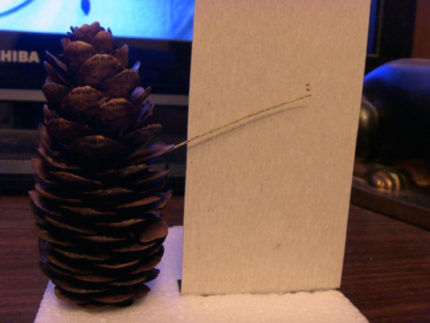
Only here you will have to observe how quickly the scales will open:
- if it's fast then There is not enough humidity in the air;
- when the tips rise up, excess moisture is felt;
- if the scales do not change their position for a long time, this indicates that everything is in order.
In the latter case, the microclimate in the room corresponds to average readings. But even in this situation, using such an experiment, it will not be possible to obtain accurate data.
Option 3 - hygrometer made from a napkin
The simplest home hygrometer can be made from available materials.It will already be more accurate, because in this case a homemade reading scale is used. It just needs to be configured correctly.
To create a homemade product you will need:
- white plain napkin;
- a piece of plywood;
- several nails;
- wire 3-4 cm long.
You also need to find glue with which a paper napkin is glued to the plywood so that it does not move.
At both ends of the fixed napkin, 2 nails are driven into the plywood. Then 2 pieces of wire are attached to the napkin. But one of them must be attached to the nail. It will act as an arrow.
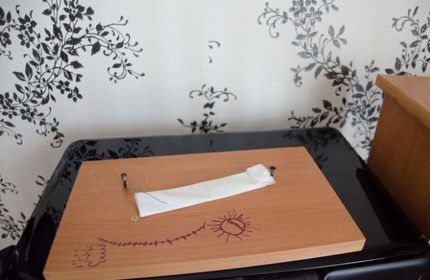
For accurate measurements, you first need to use a real mechanical hygrometer to draw the appropriate scale on the plywood. This homemade device can be used in the future; it will definitely not be disposable.
A wire attached with one side to a nail and the other to a napkin will move if the humidity in the room begins to change. To verify this, it is enough to install such a device in the kitchen while preparing food.
An analogue of a hair device is also offered for measuring the required readings of relative air humidity. But it has its drawbacks. Firstly, its production will require significantly more different materials.
And secondly, it will take time. The third problem is that you will need long hair of at least 40-50 cm. Everything here is based on the fact that human hair reacts well to any changes in air humidity.It is much easier to make a device such as a psychrometer yourself.
Option 4 - homemade psychometer
Although for production psychrometric The device will take time, but such a device will give more accurate readings.
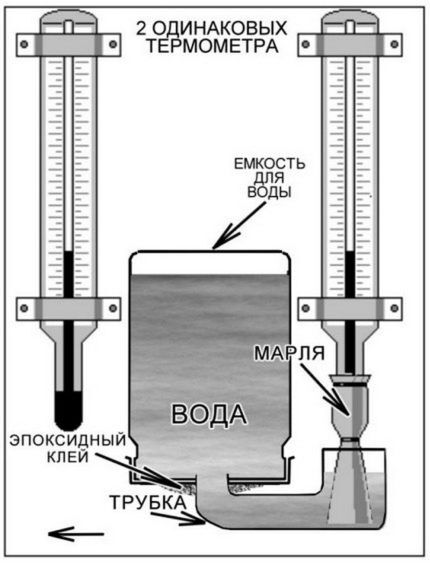
When making it, you cannot do without several important elements:
- two mercury or alcohol thermometers;
- glass jar with distilled water;
- a small piece of cotton fabric;
- small plywood board;
- several screws and thread.
Thermometers are taken to measure temperature. They must be attached to the board so that they are in a vertical position, but always parallel to each other. For this, in addition to the board, you may also need wooden planks.
And then you will need power up moisture one of the thermometers. A flask or vial containing distilled water is placed under it. Then take a strip of fabric and wrap it around the mercury ball.
If it is an alcohol thermometer, then this procedure is done with its canister. To prevent the wrapped part from unraveling over time, it must be tied with thread. And then the free end of the fabric is placed in a vessel with water to a depth of 5-6 mm.
This device, in its operating principle, is almost the same as a regular one. psychrometric hygrometer. But to use it, you need to immediately create a table. Here you will need to compare the readings of each thermometer and make certain calculations.
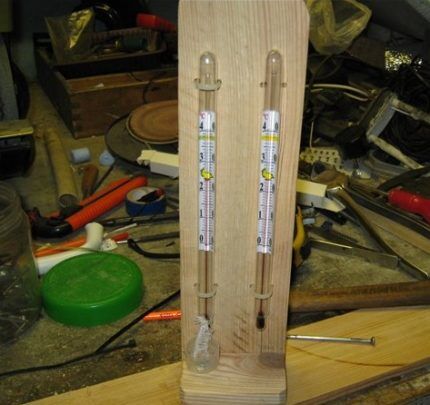
The readings of both the “dry” and “wet” devices are taken into account, and thanks to the calculations made, it will be possible to determine the level of humidity in the room. Such a homemade device is advantageous in that it is possible to obtain more accurate and correct readings.
Option 5 - complex humidity sensors
You can make a more complex air humidity sensor with your own hands, and here you will already need a soldering iron and several specific elements. Manufacturing will not be difficult if you do everything correctly.
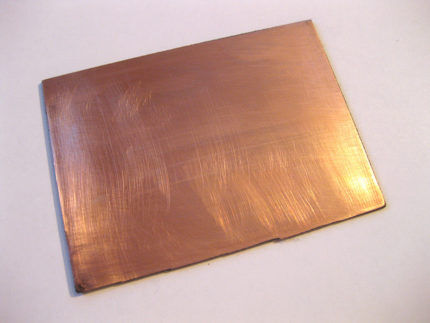
After this, two wires are securely soldered to the contact pads. Then you need to drop a drop of ink used for drawing. The humidity level will be measured by the resistance of the blot, which must dry.
If the resistance increases, this indicates an increased percentage of humidity. But when it decreases, then everything indicates an insufficient level of moisture in the air.
A good craftsman will be able to make such a device from wood. Such homemade products can even serve as interior decoration. There are just some negative aspects here.
The first disadvantage is that you will need special spruce wood.And the second negative point is to have a good workshop with a circular saw, a band saw and a drilling machine (an electric drill may also work). Therefore, this version of a homemade hygrometer can also be called complex.
Conclusions and useful video on the topic
An example of making a hair hygrometer with your own hands:
How to make a psychometer at home will be discussed in the following video:
All the described methods for making devices for measuring air humidity are simple ones, where you can do everything yourself. You can even make an electronic device yourself. But here you will need a control board and other electronic elements.
Not everyone will be able to create such a device, although it will give more accurate readings. Of all the descriptions listed above, the most advantageous can be called a psychrometer among thermometers. Making it is not very difficult.
Have you ever had to build a homemade hygrometer? Please tell our readers about what kind of device you managed to build and whether there were any difficulties in doing so. Leave your comments, share photos of your own homemade products - the contact block is located below.




The analog sensor was made from a 0.25W resistor. Use sandpaper to remove all the varnish and the coating baked into the ceramic. But not to the point of fanaticism... then the resistor is moistened with a solution of salt and sugar and dried. After which it registers the voltage in the form of resistance in megaohms and transmits it to the ADC microcontroller. inertia for about ten seconds.